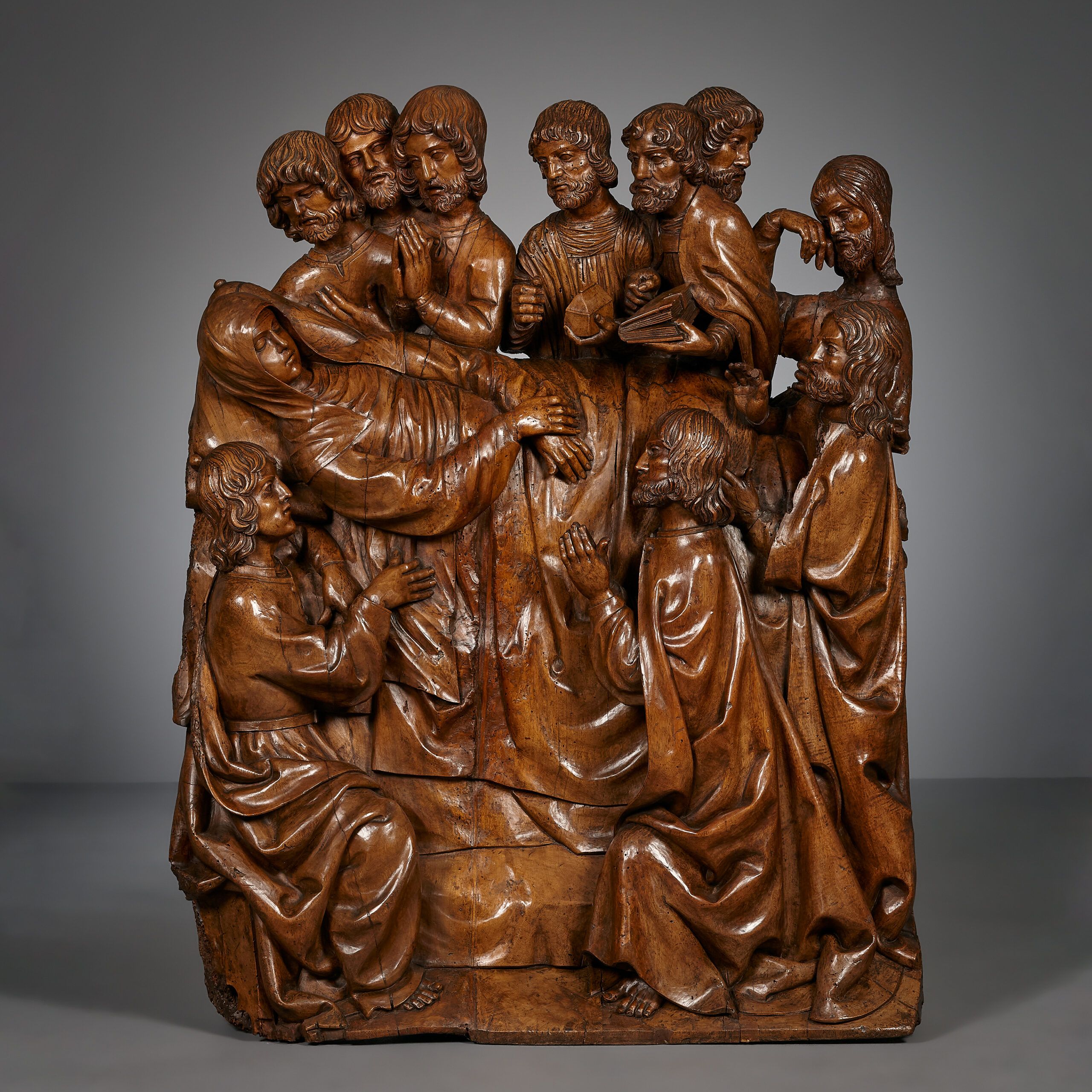Central Spain | Possibly Castile-La Mancha
Late Gothic | Second quarter of the 15th Century | Ca. 1450/70
Walnut | Carved in high relief
H. 118 cm. W. 90 cm. D. 25 cm.
PROVENANCE
Private collection | Cologne | Germany
REFERENCE LITERATURE
Barnet, P. & Wu, N.Y. (2012). The Cloisters: Medieval Art and Architecture. New York/New Haven: The Metropolitan Museum of Art, pp. 144-145;
Kasl, R. (2014). The Making of Hispano-Flemish Style: Art, Commerce and Politics in Fifteenth-Century Castile. Turnhout: Brepols
CATALOGUE NOTE
We are grateful to Michael Rief, Direktor of Collections at the Suermondt-Ludwig Museum, Aachen, for his kind assistance with cataloguing this sculpture.
This monumental and unusually large group can be seen as an early example of Hispano-Flamenco (or Hispano-Flemish) sculpture, a typical hybrid style that displays elements of both the Northern artistic movements, combined – or even fused – with elements of Medieval Iberian artistic traditions, predominantly the Mudéjar style. The elongated figures and the curved hand of the Apostle to the right indicate a date in the third quarter of the 15th century. The treatment of the hair and the large almond-shaped eyes are typical for the Spanish Gothic movement. Works in the Hispano-Flamenco style could be produced both by Flemish artists employed on projects in the Iberian Peninsula and by Iberian artists whose training or inspiration shows Northern influence. In this period the there was a great cultural, intellectual and artistic exchange between Spain and the Low Countries. The highly emotional expressions and carved tears on the faces of the grieving Apostles of the present group appear to be heavily influenced by the work of the South Netherlandish painter Rogier van der Weyden (ca. 1399–1464). Indeed, it is possible the Spanish workshop that created the present sculpture included Netherlandish artists or had access to examples derived from Van der Weyden’s paintings.
This monumental group relates to an altar shrine with The Lamentation, made in central Spain ca. 1480, kept in the collection of The Metropolitan Museum of Art, New York (The Cloisters Collection, inv. nr. 55.85; Barnet, 2012, pp. 144-145). The present group may have formed the centrepiece of such an altar shrine and an origin in the Castile-La Mancha region appears likely.

